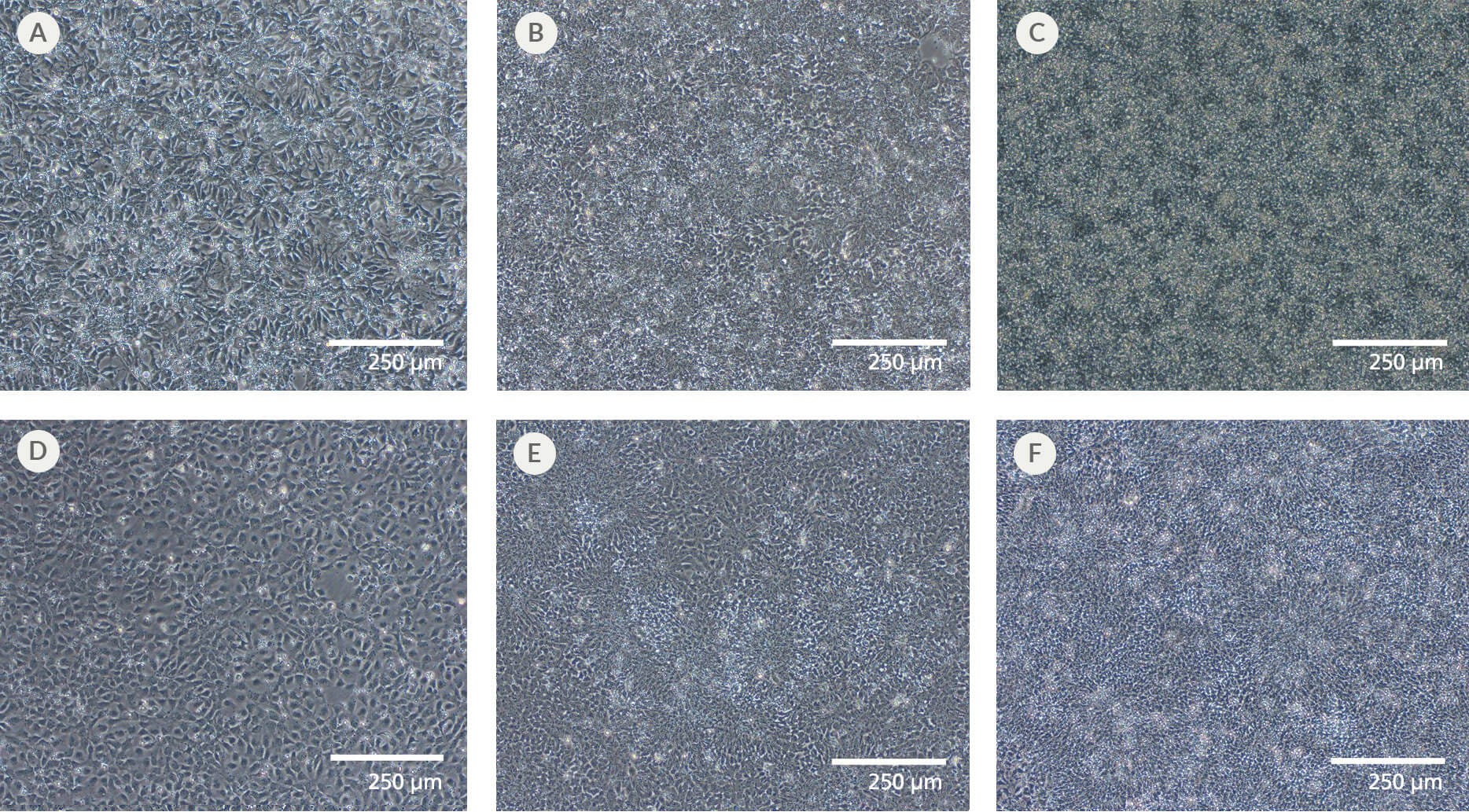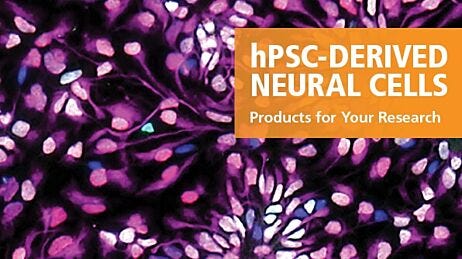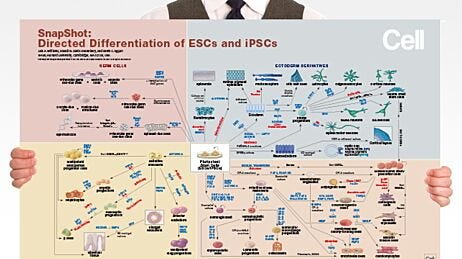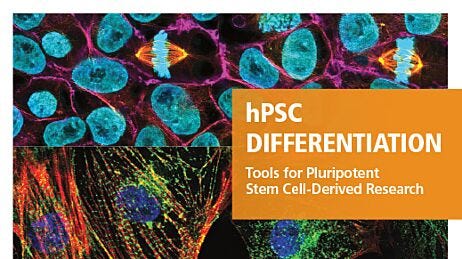Neural Induction of hPSCs Using the Monolayer Method
STEMdiff™ Neural Induction Media (NIM) is a serum-free, defined medium optimized for embryoid body formation from hPSCs
Neural induction is the process by which human pluripotent stem cells (hPSCs), including human embryonic stem (ES) cells and induced pluripotent stem (iPS) cells, are specified to a neuroectodermal fate. Neural induction may be achieved through either an embryoid body (EB) or monolayer method. For details to help you choose the best workflow for your neural induction, please see Designing Your Neural Induction and Differentiation Workflow.
In the sections below, we highlight key protocol tips and important considerations to keep in mind when performing monolayer-based neural induction using STEMdiff™ Neural Induction Medium (Catalog #05835) or STEMdiff™ SMADi Neural Induction Kit (Catalog #08581). The full protocol may be found in the Technical Manual for Generation and Culture of Neural Progenitor Cells Using the STEMdiff™ Neural System (Document #10000005588).
If you plan to use the EB option instead, please see Neural Induction of hPSCs Using the Embryoid Body Method.
hPSC Quality for Monolayer Neural Induction
It is critical to use high-quality hPSCs to ensure efficient neural induction. This means that no more than 5 - 10% of the colonies in the hPSC culture display morphological indications of spontaneous differentiation. Any areas that appear differentiated must be marked and removed prior to initiating neural induction. Visit our hPSC Cell Quality Center to learn more about how you can assess and maintain high-quality hPSC cultures.
Key Protocol Steps & Tips for Monolayer Neural Induction
- Pre-warm medium before use. Do not add cold medium from the refrigerator directly to your cells.
- Day 0: Ensure that 10 μM Y-27632 (ROCK inhibitor, Catalog #72302) is included in the seeding medium to promote good survival of single-cell hPSCs.
- Day 1 - Day 6-9: Cells are seeded at a very high density in the monolayer culture protocol and will appear confluent within the first few days after plating. However, at least 6 days in the induction medium are required for efficient neural induction, so do not passage early if cells are dense. Continue following the protocol as written, allowing the cells to pack in tighter. If cells begin to die or peel off the plate before Day 6, the initial seeding density on Day 0 may be reduced.
- Day 1 - Day 6-9: It is normal to see some floating dead cells and debris and for the culture medium to appear yellow by the time of the daily feed. As long as the medium is not turbid and the remaining attached cells still form a dense, healthy monolayer, proceed with the protocol as written. If desired, a wash step with DMEM/F-12 with 15 mM HEPES (Catalog #36254) may be incorporated during the daily medium changes to remove more dead cells and debris.
- Day 6-9 - Day 18-21: Ensure the cells are maintained in the induction medium for 3 passages before transitioning to STEMdiff™ Neural Progenitor Medium (Catalog #05833) or to downstream differentiation protocols. Using the cells at an earlier stage may enhance the proliferation of unwanted cells (such as OCT4+ cells), or could result in inefficient expansion and poor differentiation capacity to neural cell types.
- Day 18-21: When replating cells into STEMdiff™ Neural Progenitor Medium after the third passage, ensure that cells are seeded at the recommended density (e.g. at least 1.25 x 105 cells/cm2). Neural progenitor cells (NPCs) are able to pack together very closely, and continuing to culture the cells at a high density is important for maintaining their proliferative, progenitor state.
- Day 18-21: It is important to validate that the neural induction was successful by assessing the resulting NPCs for neural marker expression (PAX6, SOX1, Nestin). When performing the third passage, seed a subset of cells into a smaller well format for immunocytochemistry analysis. For more information, please see Designing Your Neural Induction and Differentiation Workflow.
Representative Culture Morphology for Monolayer Neural Induction
Please refer to the following representative culture images for a general idea of what may be observed at various stages of the neural induction monolayer protocol using the STEMdiff™ SMADi Neural Induction Kit.
Important Note
Although NPC morphology can provide information about culture health, it is not a reliable method for confirming neural induction and purity. To assess efficiency of neural induction, immunocytochemistry is recommended. For detailed information on this as well as tips for further maintenance of your NPCs, please see Designing Your Neural Induction and Differentiation Workflow.
Users may see some variation in their own cultures compared to these images. For example, different cell lines may attach more or less efficiently after plating, may be distributed more or less homogeneously, and/or may proliferate more quickly or slowly over the first 6 - 9 days.

Figure 1. Representative Culture Morphology of Monolayer Neural Induction
(A) Day 1 monolayer neural induction culture (10X objective). Cells already appear as a dense monolayer 1 day after seeding. (B) Day 3 monolayer neural induction culture (10X objective). Cells have proliferated and packed together more tightly. Cells self-assembled into rosette-like patterns may or may not be observed. (C) Day 6 monolayer neural induction culture (10X objective). The culture is healthy, very dense, and ready for the first passage. Cells self-assembled into rosette-like patterns may or may not be observed. (D) Day 7 monolayer neural induction cultures, 1 day after the first passage (10X objective). Cells were re-seeded at a density of 2 x 105 cells/cm2 on Day 6. (E) Day 9 monolayer neural induction cultures, 3 days after the first passage (10X objective). Cells have proliferated and packed together more tightly. Cells self-assembled into rosette-like patterns may or may not be observed. (F) Day 12 monolayer neural induction cultures, 6 days after the first passage (10X objective). The culture is healthy, dense, and ready for the second passage. Cells self-assembled into rosette-like patterns may or may not be observed.
Frequently Asked Questions About Monolayer Neural Induction
What is the proper nomenclature for NPCs throughout passaging? What is considered p0, p1, etc?
How flexible is the passage date during the monolayer neural induction?
Are there any points in the monolayer neural induction protocol when it is possible to double feed and/or skip feeds?
How many cells can be expected at each passage?
Why is the seeding density so high?
Still have questions about the monolayer neural induction protocol? We can help. Contact us by phone or email or use the LiveChat function on this page to discuss your specific needs and applications.
Related Resources
On-Demand Neural Induction Course
Learn about the basic principles of neural induction and choosing the workflow that’s right for you, all at your own pace with this comprehensive digital course.
Request Pricing
Thank you for your interest in this product. Please provide us with your contact information and your local representative will contact you with a customized quote. Where appropriate, they can also assist you with a(n):
Estimated delivery time for your area
Product sample or exclusive offer
In-lab demonstration







